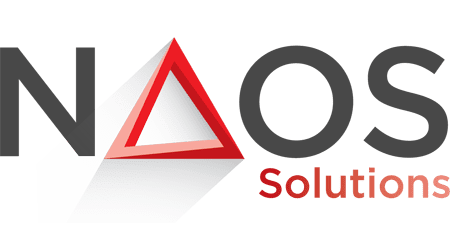Hybrid work models aren’t a new concept. They can be traced back to the 1960s in Germany, when “flextime” was introduced, and the 1970s in the US when telecommuting became mainstream.
Fast-forward to today, hybrid work models have become the global norm, including in Egypt and the MENA region. The 2020 pandemic outbreak accelerated this trend, which continues to thrive even as the situation has stabilized.

Adapting to this new way of working is key for companies to attract, retain, and manage top talent effectively.
Below, we explore how this work model is transforming talent management strategies.
THE RISE OF HYBRID WORK MODELS IN THE MENA REGION
Hybrid work models offer a flexible alternative to the traditional full-time office routine. Employees can split their time between working remotely and from a central office.
It combines the best of both worlds – remote work’s flexibility and the office’s collaborative environment.
Hybrid work setups became popular during COVID-19 and have only grown since then. Around 85% of professionals now prefer remote work full-time or in a hybrid setting.
Another survey reveals that 78% of UAE employees believe that the conventional 9-5 setup is now obsolete, and more than half of the respondents prefer a hybrid working model.
The reasons vary for everyone, from reduced commute times to better work-life balance.
Types of Hybrid Work Models
There are several types of hybrid work setups, including but not limited to the following.
- OFFICE-FIRST, REMOTE-ALLOWED
Employees work primarily from the office but can work remotely on certain days.
|
✅ Pros |
❌ Cons |
| Collaboration:
Maintains strong in-person collaboration and spontaneous interactions that can foster creativity and teamwork. Structure: Provides a clear structure, which can benefit roles requiring frequent supervision or access to office resources. |
Productivity:
May limit productivity gains associated with remote work, such as fewer distractions and commute times. Employee Satisfaction: It may not fully satisfy employees who prefer the flexibility of working remotely more frequently, potentially impacting morale and retention. |
- REMOTE-FIRST, OFFICE-AVAILABLE
Employees primarily work from home but can access an office space when needed.
| ✅ Pros | ❌ Cons |
| Productivity:
Allows employees to benefit from a quiet, personalized work environment, often leading to increased productivity. Employee Satisfaction: Provides significant flexibility, which can enhance work-life balance and job satisfaction. |
Collaboration:
Reduced spontaneous in-person interactions can hinder relationship-building and team cohesion. Resource Access: May be challenging for employees who need frequent access to office-specific resources or equipment. |
- SPLIT-WEEK MODELS
Specific days are designated for in-office work, while other days are reserved for remote work. This model is usually proposed to employees with certain seniority in the company.
| ✅ Pros | ❌ Cons |
| Balance:
Offers a balanced approach, combining the benefits of in-person collaboration with the flexibility of remote work. Predictability: Provides a predictable schedule that can help plan work and personal activities. |
Logistics:
Requires careful scheduling and coordination, which can be complex and potentially disruptive. Consistency: Inconsistent daily routines can be challenging for some employees, affecting productivity and work habits. |

- FLEXIBLE HYBRID
Employees can choose where they work on a given day without set schedules.
| ✅ Pros | ❌ Cons |
| Flexibility:
Maximizes flexibility, allowing employees to work in the environment that best suits their needs on any given day. Employee Satisfaction: High levels of autonomy can significantly boost job satisfaction and retention. |
Collaboration:
This can lead to coordination challenges and make spontaneous in-person meetings less likely, potentially impacting team dynamics. Accountability: Requires robust communication and accountability systems to ensure productivity and alignment with organizational goals. |
IMPACT OF HYBRID WORK MODELS ON TALENT MANAGEMENT
Reports indicate that 44% of HR professionals in Saudi Arabia, 29% in Egypt, and 39% in the UAE find attracting, recruiting, and retaining talent in a hybrid work setup easier.
Here’s a quick overview of how this work environment impacts talent management. By balancing the benefits and challenges of hybrid work models, organizations can develop effective strategies to attract, recruit, and retain talent in this evolving landscape.
Recruitment
- Companies can bid farewell to limit hires by location and scout talent worldwide. Virtual interviews make the process smoother than ever.
- Recruiters may find assessing a candidate’s ability to thrive in a remote work environment more challenging. However, this isn’t necessarily a downside; companies can schedule an in-person interview for better judgment.
- Hybrid work models increase competition for top talent. Egyptian candidates can now easily compete on the regional and global level, often securing better pay by working from home for international or regional companies. This trend makes it more challenging to recruit high-profile candidates locally, as the market prices for skilled professionals are getting higher.

Adjust your Recruitment Strategy to the New Reality
Although hybrid work offers numerous perks, it necessitates significant adjustments in talent management strategies. To adapt, companies must cast a wider net to find candidates who can thrive in remote and in-office environments. Highlighting your company’s flexibility and collaborative opportunities can attract the right talent.
You should also emphasize your commitment to work-life balance. After all, employees globally prioritize it. Besides, you can also showcase your remote-friendly culture to attract top talent from near and far.
Effectively evaluating remote candidates requires a thoughtful approach. Online assessments, such as those provided by HackerRank for coding tests or Criteria for cognitive and personality assessments, are invaluable in evaluating technical skills and other competencies.
Incorporating work simulations or task-based assessments through Vervoe or TestGorilla can demonstrate how candidates handle real-world scenarios.
Additionally, behavioral interview questions focused on remote work experiences, such as “Can you describe a time when you successfully managed a remote project?” or “How do you stay motivated and productive when working from home?” can provide deeper insights into a candidate’s suitability for a hybrid work environment.
Utilizing tools and technologies effectively can streamline the recruitment process. Applicant Tracking Systems (ATS) like Recruitee or Greenhouse can manage the hiring process, from sourcing candidates to onboarding. The leading ATS incorporates video interviewing tools to enable asynchronous video interviews, allowing candidates to record their responses at their convenience. Collaboration platforms like Slack or Trello ensure smooth communication and coordination during hiring.
By leveraging these strategies and tools, organizations can effectively evaluate and recruit remote candidates to find the best talent suited for a hybrid work environment.
Onboarding
- Welcome kits, virtual platforms, and one-on-one mentorship make new hires feel at home.
- Bonding from a distance might be a challenge for some.
Adjust your Onboarding Strategy to the New Reality
Develop seamless virtual onboarding processes that make new hires feel part of the team from day one.
Invest in user-friendly platforms (consider Zoom, Microsoft Teams, or Slack) to guide new employees through company policies and culture.
Training
- Virtual training and e-learning open up new possibilities. Employees can, for instance, easily access training resources regardless of location. Plus, it eliminates the need for travel and other expenses associated with traditional in-person training sessions.
- Hands-on training might still require face-to-face interactions.

Adjust your Training Strategy to the New Reality
Further, continuous learning programs help keep skills sharp and employees engaged. One excellent strategy is gamification.
Think points, badges, and maybe a little friendly competition among colleagues. After all, leveling up doesn’t have to be boring. Here are some ideas that might come in handy when onboarding.
Performance Management
- Clear communication and remote-friendly tools keep everyone on track.
- Keeping evaluations fair among remote and in-office folks requires a thoughtful approach.
Adjust your Performance Management to the New Reality
Fairness among employees is as important as your business reputation. Establish clear performance metrics and expectations for both groups to ensure everyone knows what success looks like.
Start by defining clear and measurable performance goals. Use the SMART criteria (Specific, Measurable, Achievable, Relevant, Time-bound) to create objectives that are easy to track. Regularly review and adjust these metrics to align with evolving business goals and employee roles.
One practical framework is the OKR methodology (Objectives and Key Results), which helps align individual performance with company objectives. Regularly reviewing OKRs keeps employees focused on critical priorities and allows for adjustments based on performance data. Another helpful approach is the 360-degree feedback system, which collects performance feedback from an employee’s peers, subordinates, and supervisors, providing a well-rounded view of their contributions.
Retention
- Flexibility keeps employees happy, which is why they are more likely to stay. A survey of 2100 respondents who worked remotely during the pandemic showed that 58% would prefer quitting their jobs if they couldn’t work from home for at least some time. Other data reveals that 46% of people prefer a hybrid setting.
- Combating feelings of isolation can be a challenge.

Adjust your Retention Strategy to the New Reality
In a flexible work environment, keeping talent happy and engaged is the name of the game. Offering benefits like remote work options and flexible schedules is pivotal to ensuring employee well-being.
- Create a positive and inclusive remote culture
Strategies to combat isolation and maintain engagement are crucial. Virtual team-building activities, such as online games, virtual happy hours, and themed video call events, can help maintain a sense of community. Regular check-ins through Zoom or Microsoft Teams ensure employees feel connected and supported. Implementing virtual coffee breaks or “watercooler” chat sessions can also recreate casual office interactions.
For example, Google’s hybrid work model offers flexibility while ensuring regular in-person interactions. Google’s “Googlegeist” employee survey gathers feedback on engagement and satisfaction, allowing the company to tailor its retention strategies. Another example is Atlassian’s “Team Anywhere” program, which supports remote work with stipends for home office setups and regular team retreats to foster in-person connections.
Company culture and leadership play vital roles in retaining talent. Leaders should prioritize transparent communication, regular feedback, and recognition of employee achievements. Tools like Bonusly and Kazoo can facilitate peer-to-peer recognition, enhancing the sense of belonging and appreciation. A culture emphasizing trust, inclusivity, and professional growth can significantly impact employee retention.
While remote work is beneficial, frequent in-person events are crucial for team building and maintaining strong interpersonal relationships. Organizing quarterly or bi-annual offsite meetings, team-building retreats, and in-office collaboration days can help bridge the gap between remote and in-person work. These events allow employees to bond, share experiences, and build a cohesive team spirit.

- Coworking Spaces and Business Incubators: A Solution for Remote Employees
As hybrid work models gain traction, companies are exploring innovative ways to support their remote employees. Coworking spaces and business incubators have emerged as valuable solutions, offering flexible, professional environments where remote workers can thrive. These spaces provide the perfect blend of community and convenience, helping employees maintain productivity while avoiding the isolation often associated with working from home.
Moreover, business incubators can offer additional resources such as networking opportunities, mentorship programs, and access to essential business services, making them an excellent choice for startups and small businesses looking to grow. By leveraging coworking spaces and incubators, companies can ensure their remote employees can access the tools and support they need to succeed, fostering a collaborative and dynamic work culture.
NEW HR SKILLS TO DEVELOP FOR HYBRID TALENT MANAGEMENT
Technological Tools and Solutions
Hybrid talent management means creating a culture that connects people, ideas, and goals. Here’s what makes it possible and seamless.
- Virtual collaboration platforms. Platforms like Miro, Zoom, and Slack allow teams to brainstorm, share ideas, and create magic together. They encourage seamless collaboration and bridge the gap between remote and office colleagues.
- Performance tracking tools. Tracking performance has to be about empowerment, not micromanaging. Tools like Trello and Asana can help teams stay on track and celebrate wins. These tools offer transparent dashboards and real-time updates so everyone knows where they stand and how they contribute to the big picture.
- Employee engagement solutions. Platforms like Slack’s Donut and TINYpulse infuse fun into remote work. From virtual coffee breaks to pulse surveys, they keep the vibe upbeat and connections strong.
To ensure seamless integration, you must customize project templates and task boards to match your team’s work habits.
Besides that, consider investing in ongoing training to ensure your team feels confident using new technology. You can also create feedback loops to know what’s working and what could be improved.
Cultural and Legal Considerations For Hybrid Talent Management
Transitioning to a hybrid model where water-cooler chats are replaced with virtual coffee breaks might raise some eyebrows.
For example, Arab cultures highly value face-to-face communication. Therefore, we need to find creative ways to maintain those interpersonal bonds.
You can host a virtual team lunch or schedule regular check-ins to catch up on non-work-related matters. The key is to honor cultural emphasis on relationships while implementing hybrid work practices.
Besides, labor laws vary from country to country, and Egypt is no exception. From employment contracts to working hours, there are rules in place that govern how workers need to operate. So, things get a bit trickier when it comes to remote work.
To comply with local labor laws, you must revisit your contracts, overtime regulations, and employee benefits. It’s not the most glamorous part of the job, but it’s crucial to dot your i’s and cross your t’s to avoid legal headaches down the line.
Preparing for the Future
We can’t predict the future but can certainly prepare for it by thinking outside the box and challenging the status quo. An HBR review highlights several future work trends:
- a 4-day workweek is likely to become a norm,
- managers will need to prioritize employee conflict resolution,
- climate change protection will be an employee benefit,
- employees are changing industries mid-career and embracing non-conventional employment models.
HR professionals must stay agile and adaptable to stay ahead of the curve.

Actionable Steps for Companies To Get Prepared
💡 Focus on Conflict Resolution:
As an HR manager, you must prioritize conflict resolution by undergoing training in conflict management and communication skills. You should also implement regular check-ins and open forums where employees can voice concerns and encourage a culture of transparency and proactive problem-solving.
Incorporate Climate Change Initiatives: Offer benefits that address climate change, such as remote work options to reduce commuting, incentives for using public transportation, and supporting sustainable practices within the workplace. Highlight your company’s commitment to environmental responsibility in your employer branding.
💡 Adapt to Non-conventional Employment Models:
Recognize the growing trend of employees changing industries mid-career and embracing gig work or freelance roles. Consider creating more flexible job roles that accommodate project-based work and offering part-time or contract positions.
💡 Tailoring HR Policies:
When crafting HR and other work-related policies, cater to the workforce’s diverse needs. This may include flexible work hours, remote options, and tailored benefits packages. To learn about employee needs, conduct regular surveys and focus groups. Use this feedback to continuously improve your policies and practices, making it easier for talent to stay at your organization.
💡 Continuous Learning and Professional Development:
Continuous learning is now a survival skill. As a professional, staying plugged into the latest trends and upskilling is crucial. According to a survey, 80% of MENA respondents have already engaged in continuous learning. Encourage your employees to participate in professional development by offering access to online courses, certifications, and training programs. Platforms like Coursera, LinkedIn Learning, and Udemy can provide valuable resources.
💡 Networking and Industry Engagement:
Join social media groups and attend industry-specific networking events to stay informed about which trends work and which don’t. Encourage employees to develop their Employer branding and participate in webinars, conferences, and professional associations to expand their knowledge and connections.
💡 Cultivate a Culture of Innovation:
Foster an organizational culture that values innovation and agility. Encourage employees to experiment with new ideas and approaches, providing the necessary support and resources. Review and refine your strategies to adapt to changing market conditions and workforce expectations.
By taking these actionable steps, companies can effectively prepare for future trends, ensuring they remain competitive and attractive to top talent. Continuous learning, professional development, and a flexible, forward-thinking approach will be vital to navigating the evolving work landscape.
Conclusion
The future of work is here, and it’s hybrid. This shift has revolutionized talent management, presenting opportunities for improvement and innovation. HR professionals must adapt to these changes to keep their organizations attractive to top talent. As a business professional, being a proactive leader who empowers employees to take ownership of their work is crucial. The future of business now belongs to those who dare to think boldly and lead with purpose.
How has your organization adapted to hybrid work models? What strategies have you found most effective in managing talent in this new environment?
If you want to learn more about outsourcing HR functions or need expert advice on implementing effective talent management strategies, contact NAOS Talents.
Are you considering externalizing recruitment or other HR functions in the coming months? Contact our experts to explore how NAOS Talents can support your organization’s HR needs. Let’s navigate the future of work together!

